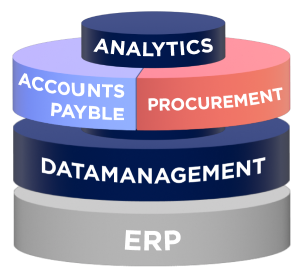3 min read
E-Invoicing: Stick to the Norm!
Danny Kind, Project Manager ICreative
Mar 2, 2017 9:44:29 AM
Much has changed in recent years on my visits to companies in the Netherlands. Every rational person knows by now that electronic invoices are better and more efficient than the use of paper or PDF files. Better for the sender who no longer incurs costs for producing and sending paper invoices. Better for the receiver who can process invoices more quickly and efficiently, which in turn benefits the sender. And better for the environment; less paper, less felling of trees, a smaller environmental footprint and thus a better world for future generations. E-invoicing is therefore a no-brainer.
Nevertheless, e-invoicing is not widely supported. We are all busy with ongoing projects. Busy dealing with day-to-day issues. Thus, a subject such as e-invoicing is often neglected. All the more because it is difficult to envisage in advance how e-invoicing should be organised and what cost savings can be achieved. We therefore tackle more tangible projects such as replacing the ERP system or transferring office automation to the cloud.
Besides, e-invoicing also has implications for suppliers and clients. They therefore need to be involved in the implementation of e-invoicing. Because a company can have hundreds, or even thousands of business partners, suppliers as well as clients, it is a considerable undertaking to communicate with all these companies in order to implement e-invoicing and put it into operation.
Putting the interests of your own company first
Companies that wish to switch to e-invoicing generally place unrealistic demands on electronic invoicing and thus cause problems for the supplier. For example, it often happens that the supplier is suddenly expected to provide a section of the client’s coding. The client’s ledger accounts and cost centres must be entered onto the invoice by the supplier to make invoice processing as efficient as possible for the client. What the requesting client does not realise is that these additional requirements cause serious problems for the supplier. The suppliers’ invoicing system generally contains only the legally required invoice fields and is oriented in a general manner. Additional fields cannot simply be added in such ERP systems. Let alone when not one but several clients suddenly make additional fields mandatory.
Knowing that each company sends invoices to more than one company, such specific requirements from a single company are a stumbling block to the successful implementation of e-invoicing. If we suddenly need to include client-specific fields such as the "business group number" in the UBL, for example, supplier and client need to decide by mutual agreement in which of the UBL fields this "business group number" is placed. If that works for this specific client-supplier relationship, we have to hope that other business partners have not used this field for a different invoicing detail, or that the supplier has not placed the relevant invoice detail in a different field for another client. That would mean that the supplier requires different outgoing invoicing flows, which would seriously hamper the implementation of e-invoices.
Standardisation
Implementation of e-invoicing is dependent on the templates used, with suppliers and clients knowing exactly what is expected of them and an invoice flow for one business partner containing the same information as that for another business partner. For example, the creation of an XML invoice using the UBL template is feasible so long as we use the standard fields. If we stick to these templates, you as a client may not receive all the desired (coding) information, but you may succeed in getting nine out of ten suppliers to submit e-invoices. And achieving a 90% efficiency gain with nine out of ten suppliers offers many more advantages than achieving a 100% efficiency gain with a single supplier while the other suppliers continue submitting invoices on paper or in PDF format.
Those who want to achieve automation gains would be very wise to use the standard fields of an invoice. Discuss this with your suppliers and you will see that e-invoicing need not be complex and that benefits are easily achieved.
Danny Kind
Sr. Product Manager, ICreative P2P
dkind@icreativep2p.com
06 261 148 21
About ICreative
ICreative helps large organizations, multinationals, universities and governmental institutions with automation of purchase to pay processes, such as document digitization, automatic processing of invoices, and analyses of supply and spend. Due to the size and international scope of many of our clients, we have gained vast experience with international roll-outs as well.







